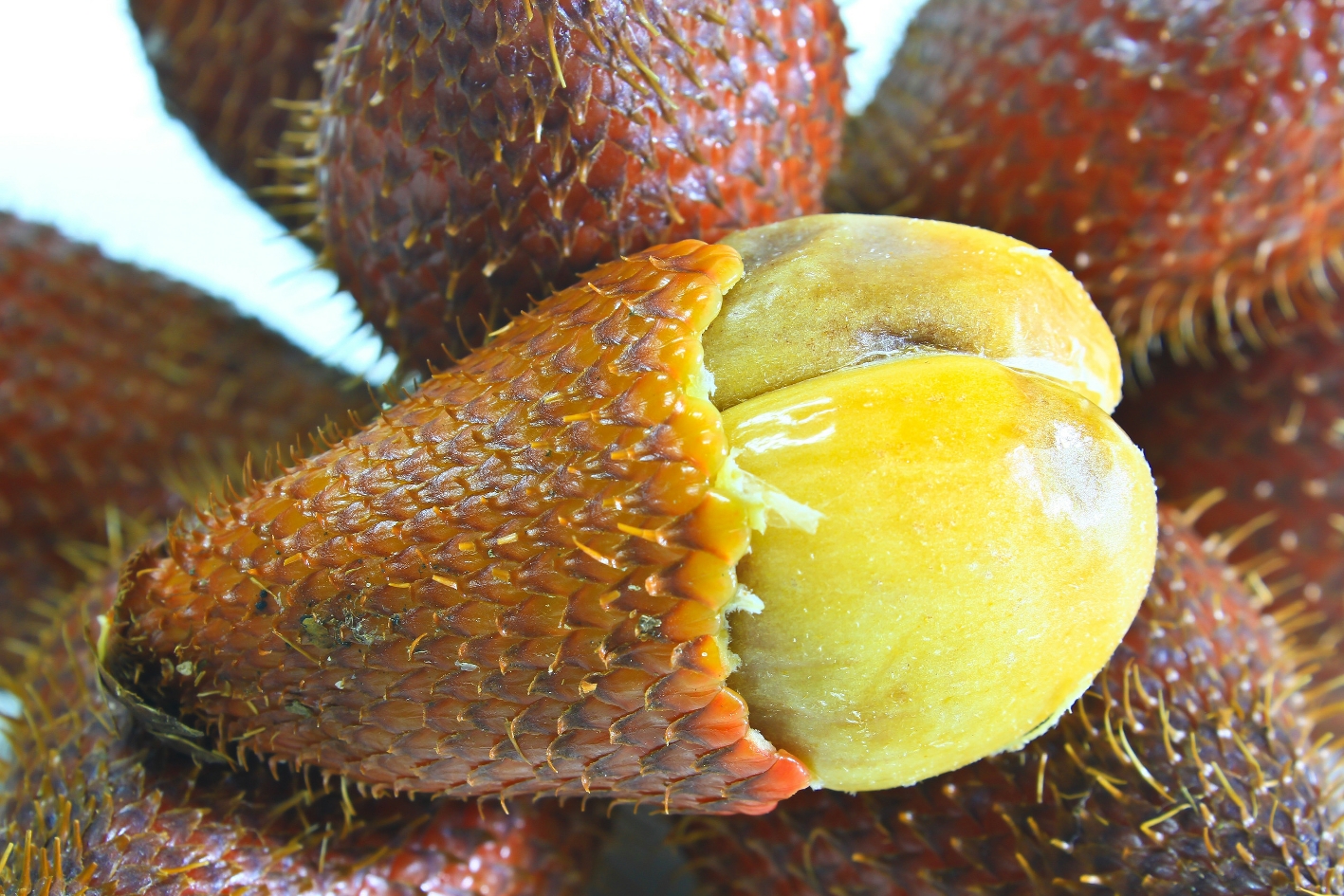
The exotic delight of snake fruit
" Salak's unique flavour and texture make it a versatile ingredient in culinary creations "
Salak, commonly known as snake fruit, is an exotic tropical fruit renowned for its unique appearance and delightful taste. Named for its reddish-brown scaly skin resembling snake scales, this fruit offers a sensory adventure with its crunchy texture and a perfect balance of sweetness and tanginess. Let’s delve into the fascinating world of Salak and uncover its secrets.
Salak belongs to the palm family. It’s native to regions of Southeast Asia, particularly Indonesia. Its distinctive appearance is what sets it apart. Each fruit is enveloped in a reddish-brown, scaly skin, reminiscent of a snake's scales, hence the name “snake fruit”. Despite its intimidating exterior, the fruit inside is a true gem, with a flavour profile that surprises and delights the palate.
Cracking open a salak reveals several triangular segments, each containing a creamy, translucent flesh with a texture reminiscent of an apple. Biting into this crunchy fruit unveils a burst of flavour. Sweet with a hint of tartness, reminiscent of a blend between pineapple and pear. The juxtaposition of textures - crunchy skin and juicy flesh - adds to the overall sensory experience, making salak a favourite among fruit enthusiasts.
Beyond its tantalising taste and intriguing appearance, salak boasts an array of health benefits. Rich in vitamins, minerals, and antioxidants, this fruit offers a nutritious addition to any diet. It is particularly high in potassium, which supports heart health and regulates blood pressure, as well as dietary fibre, which aids digestion and promotes gut health. Additionally, salak contains essential vitamins like vitamin C, which boosts the immune system and supports collagen production.
In Indonesia, salak holds cultural significance beyond its culinary use. It is often offered as a symbol of hospitality and goodwill to guests. Salak’s presence in traditional ceremonies and rituals highlights its importance in local customs. Moreover, salak plays a role in traditional medicine, with its various parts used to treat ailments ranging from diarrhoea to skin conditions.
Salak's unique flavour and texture make it a versatile ingredient in culinary creations. It can be enjoyed fresh as a snack or dessert, incorporated into fruit salads or smoothies for a refreshing twist, or even used in savoury dishes to add a touch of sweetness and complexity. Its versatility lends itself well to both traditional and modern cuisine, making it a beloved ingredient in Indonesian cooking.
Salak, the enigmatic snake fruit, captivates with its striking appearance, tantalising flavour, and myriad of health benefits. It invites all who taste it to embark on a journey of discovery through the tropical landscapes of Southeast Asia.
Next time you encounter this exotic fruit, dare to indulge and experience the magic of salak firsthand.
Prepared by a Chaîne News Online Staff Writer
Researched from various sources. E&OE
Wishing you a Happy 'Chocolate' New Year!